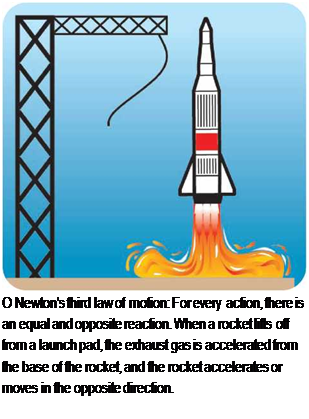An airliner is built from millions of parts—6 million for a Boeing 747 and more than 3 million for a Boeing 767 or 777. Boeing airliners are built in the world’s largest building in Everett, Washington, about 30 miles (about 48 kilometers) north of Seattle. Parts arrive every day from all fifty U. S. states and from all over the world. Ensuring that the right number of correct parts arrive on time at the relevant production line is an incredibly complex task.
Each aircraft is built in sections. It is vital that these sections are exactly the right shape and size so that they fit together precisely. The sections are built on very accurately made frames called jigs. Overhead cranes move finished sections together for assembly on the production line. Highly skilled workers swarm over the airplane, installing the wiring, hydraulics, avionics, engines, fuel system, and countless other parts.
Modern airliners contain so many electrical and electronic systems that every Boeing 747 needs 171 miles (275 kilometers) of wiring to connect it all together. When all the equipment and systems have been installed in the airliner, they are checked to make sure that
к
 SPACECRAFT MATERIALS AND STRUCTURES
SPACECRAFT MATERIALS AND STRUCTURES
Materials and structures are vital to spacecraft. The design of a spacecraft depends on whether it is manned or unmanned and whether it will land or stay in space. The first manned spacecraft for traveling only in space was the lunar module that landed astronauts on the Moon. Its spidery, boxlike shape, and flimsy structure would not have survived reentering Earth’s atmosphere, but it was perfectly designed for its task.
Building a spacecraft begins with a strong frame to which the other parts of the craft are attached. Aluminum metal is commonly used for this because it can be formed into a strong structure that also is lightweight. The Space Shuttle has a skeleton-like frame made of aluminum covered with a thin aluminum skin.
Manned spacecraft must be protected from the heat of reentry, so they are covered
 with heat-resistant materials. Space capsules usually have a heat shield that can be used only once. The Space Shuttle’s heat protection can be used again and again.
with heat-resistant materials. Space capsules usually have a heat shield that can be used only once. The Space Shuttle’s heat protection can be used again and again.
New lightweight materials, such as carbon fiber, are replacing some of the metal parts of spacecraft, but aluminum is still used for the main structure of large, manned craft. The biggest and newest space structure, the International Space Station, is made mainly from aluminum.
О NASA workers prepare the Mars Pathfinder lander for its journey into space by closing up its metal "petals." The Pathfinder landed on Mars in 1997. Its small Sojourner rover (visible in place on the foremost petal) then traveled over Mars’ surface.
everything works properly. The final production lines—two for 777 airliners,

tasks are to install the seating in the layout and to paint the airplane in the customer’s chosen colors.
As each plane is assembled at the factory, it moves along the production line toward the giant doors where the finished airliners leave. The factory is so big that there is enough room for four
one for 747s, and one for 767s.
SEE ALSO:
• Aerodynamics • Aeronautics • Air and Atmosphere • Aircraft Design
• Airship • Biplane













 around 400 miles per hour (644 kilometers per hour) at a height of
around 400 miles per hour (644 kilometers per hour) at a height of

 swift paces down the windward slope (the side of the hill against which the wind is blowing) until the glider catches enough air to lift off.
swift paces down the windward slope (the side of the hill against which the wind is blowing) until the glider catches enough air to lift off. with a spray nozzle, and then using the cloth. They normally bathe every day after exercising, showering in a special economy shower unit. A space station shower uses less than 1 gallon (4.5 liters) of water, compared with an average of 11 gallons (50 liters) used by a person showering on Earth.
with a spray nozzle, and then using the cloth. They normally bathe every day after exercising, showering in a special economy shower unit. A space station shower uses less than 1 gallon (4.5 liters) of water, compared with an average of 11 gallons (50 liters) used by a person showering on Earth.
 in the same direction, they combine to produce a stronger force. This is called the resultant force. When forces act in opposite directions, the resultant force is the difference between them. If the resultant force acting on a mass is not zero, it produces acceleration.
in the same direction, they combine to produce a stronger force. This is called the resultant force. When forces act in opposite directions, the resultant force is the difference between them. If the resultant force acting on a mass is not zero, it produces acceleration. with heat-resistant materials. Space capsules usually have a heat shield that can be used only once. The Space Shuttle’s heat protection can be used again and again.
with heat-resistant materials. Space capsules usually have a heat shield that can be used only once. The Space Shuttle’s heat protection can be used again and again.